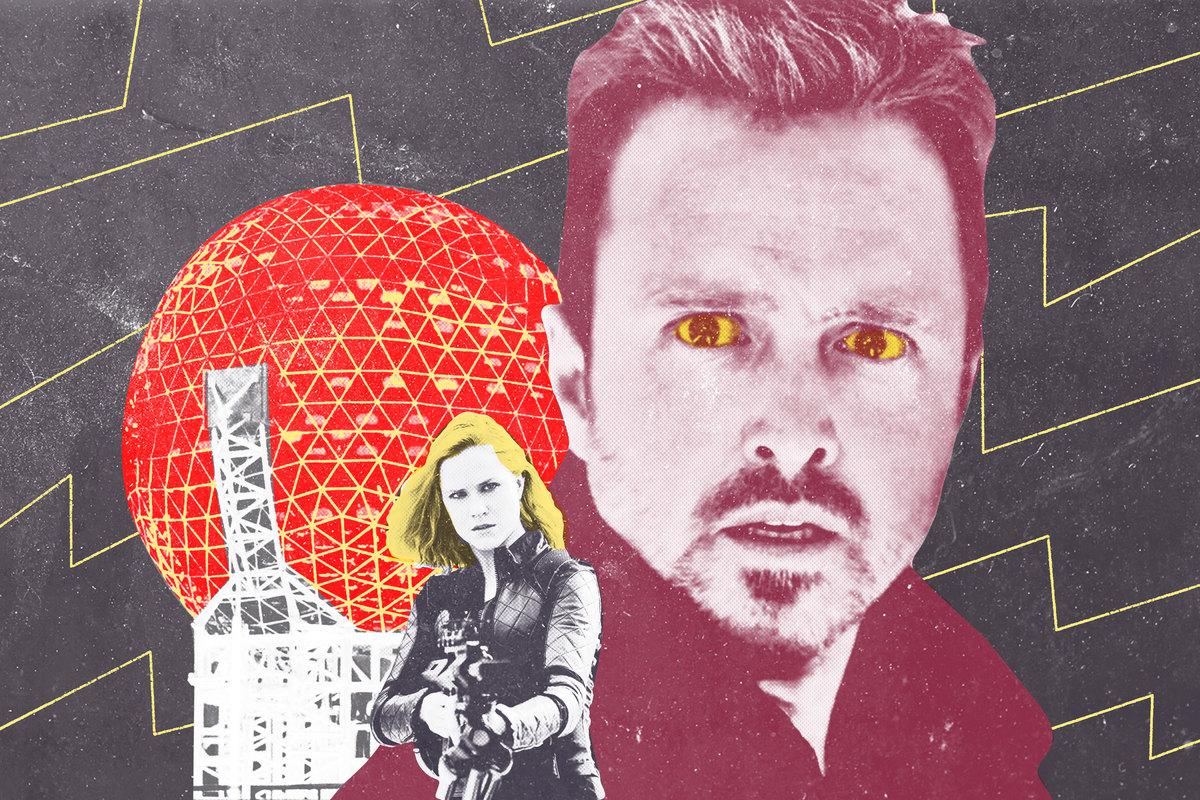
To help sift through the vast amount of information Westworld drops on us every week, The Ringer will be answering reader questions in this space for the second half of this season. (You can send your emails to therecappableswestworld@gmail.com.)
“Every magic trick consists of three parts,” Michael Caine’s character says in the beginning of The Prestige. “The first part is called the pledge, where the magician shows you something ordinary. … The second act is called ‘the turn.’ The magician takes the ordinary something and makes it do something extraordinary. ... But you wouldn’t clap yet, because making something disappear isn’t enough. You have to bring it back. That’s why every magic trick has a third act. The hardest part. The part we call ‘the prestige.’”
The screenplay for The Prestige was written by Westworld cocreator Jonathan Nolan, and his explanation for a magic trick is a good window into how he views storytelling. With one episode left in the third season of Westworld, it is clear Nolan and his cocreator and wife, Lisa Joy, are performing a magic trick. We have already seen the supposedly ordinary, from Caleb to Charlotte to William to Serac to Rehoboam, show some extraordinary characteristics. But we’re still holding our breath, waiting for the final part. Nolan and Joy have already managed a trick once this season with their reveal that Dolores was in Charlotte, Connells, and Musashi. And not only did that Dolores revelation satisfy the show’s diehard fans, but it also made the show easier to understand by distilling four characters into one. There is only one episode left, and rewarding the deep thought the show’s audience puts in while also making the plot simpler is the tightrope the final episode must walk. The prestige must feel extraordinary—but it also must make sense. Landing the ending is the hardest part, and will determine whether this third season of Westworld is applauded or met with derision. If anyone knows that, it’s Jonathan Nolan. Without further ado, let’s get into questions and theories for the finale.
Janna: If Dolores knew that Caleb was an outlier who had been through therapy and released, making him essential to her plan, how do we explain how Dolores and Caleb met in the first place?
Before we dive into this, let’s recap what we learned about Caleb in this episode. Caleb had been led to believe that he and his best friend Francis, a.k.a. Kid Cudi, were deployed in Russia, which was steeped in a civil war. There, insurgents attacked them and killed their entire unit except for the two of them, so they tracked down the leader of the insurgents only for Francis to get killed in the process. Cue sad Kid Cudi humming.
This story turned out to be half-true. Caleb (as far as we know) served in the military, but after his and Francis’s unit was attacked, they were honorably discharged and returned to the United States. Once back, they began carrying out kidnappings and murders for Rehoboam under the guise of working as murder taskrabbits on the Rico app. The “insurgent leader” that Caleb and Francis kidnapped was a pharmaceutical executive, but things went wrong when the executive explained that the AI was manipulating them. The AI offered Francis a bounty to kill Caleb, but Caleb killed Francis first (and then killed the executive for shits and gigs). Caleb was then taken to a facility in Sonora, Mexico, where his memories were disassociated until he believed that Francis died in Crimea as a part of their military service. Once Caleb realizes all of this, he turns to the borderline omniscient AI, Solomon, and yells “You piece of SHIT!” Yeah, that definitely hurts the AI’s feelings, man.
During and after all of this self-discovery, Dolores urges Caleb to be a leader and a revolutionary in humanity’s emancipation from AI tech, though who he is supposed to lead and what exactly the revolution is about is unclear beyond being anti-AI. If there was any doubt about Caleb’s centrality to the story, Bernard removes it toward the end of the episode when he says that Caleb isn’t a part of Dolores’s plan: He is the plan. And if Caleb is this crucial to what Dolores is planning, it’s highly unlikely that the two met by happenstance. Caleb initially became involved in the story when he took a job on the Rico app to deliver drugs to Connells, who tried to inject Dolores with them to make it look like she overdosed. After Dolores gets into a shoot-out with Connells and his henchman, Caleb finds Dolores in a tunnel, bleeding.
There is little chance this was an accident, but how could Dolores have orchestrated it? We know that the Rico app is being controlled by Rehoboam, and we know that Rehoboam can’t “see” Dolores. So how could Caleb and Dolores have ended up on a collision course?
One potential answer is hiding in the first episode of the season. When Dolores’s boyfriend, Liam Dempsey Jr., is summoned to a meeting with Serac’s crony, Martel, Martel tells Liam that Rehoboam has been compromised.
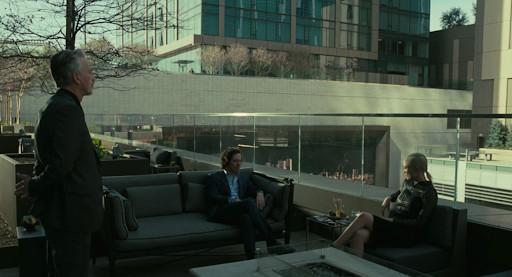
“We think someone may have acquired access to Rehoboam. A level of sophistication we haven’t seen before. Like someone is testing the system,” Martel says.
“Rehoboam itself would alert us if anybody even tried,” Liam replies, smugly. Martel, unimpressed, shoots back: “If someone from the outside tried, yes. But if they abused the trust of someone who already had access ...”
It would be hard to explain how or why Rehoboam would bring Dolores and Caleb together by chance, or that Dolores came up with her plan with Caleb only after he came to her rescue. What would make a lot more sense is if Dolores was the person who acquired access on a “level of sophistication we haven’t seen before.” If Dolores hacked into Rehoboam, she would have been able to access the Rico app and send Caleb to her, charting the course of his life and many of the events in Season 3. But what would “a level of sophistication we haven’t seen before” look like?
One answer could be that there is another Dolores plugged into Rehoboam. We know Dolores came to the human world with six control units (five in her purse plus one in her head) and those units have been seen in Dolores, Bernard, Charlotte, Connells, and Musashi. The sixth is unaccounted for, but if she is in the system—and maybe she got there through her relationship with Liam—it would explain a lot of what we have been seeing and why Caleb met up with Dolores. It would also explain who the voice is that Dolores has been talking to this season, and maybe even who spoke to Caleb at the end of the seventh episode. The voice could be Solomon, but what if it was a different version of Dolores?
But beyond that galaxy-brain-ish possibility, a much simpler question remains unanswered: What does Dolores want Caleb to do? We can use some of the visual cues from this episode to make some deductions. On the ride to Sonora, Dolores remarks how it reminds her of the park.
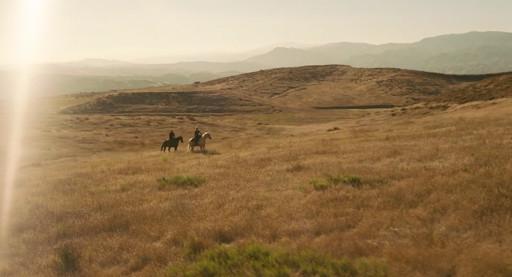
Specifically, it parallels a scene from the very first episode of Westworld, when Dolores and Teddy are looking over her cattle.
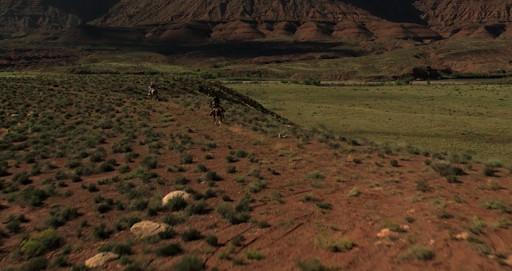
In that scene, Dolores rides a white horse while Teddy rides a black one. They have the following exchange.
Teddy: “I never understood how you keep them all in the same direction.”
Dolores: “That’s the Judas steer. The rest will follow wherever you make him go.”
Teddy: “How do you pick him out?”
Dolores: “I just know these things. Same as I knew you’d be back.”
Teddy: “You saying I’m predictable?”
Dolores: “There’s a path for everyone, and your path leads you back to me.”
Three episodes later, Dolores reflects on her cattle drive and how she used to worry about the calves that would go astray. But, she says, “it never occurred to me we were bringing them back for the slaughter.”
In the first episode of Season 2, Dolores and Teddy return to this same spot, though this time Dolores rides a black horse.
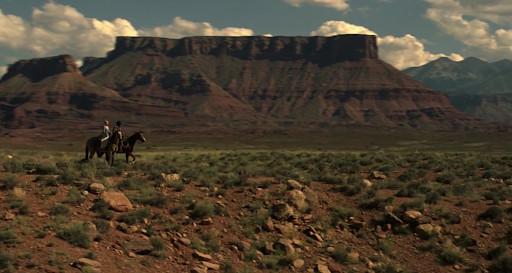
“We’ve ridden 10 miles and all we’ve seen is blood,” Teddy tells Dolores. “Is this really what you want?” Caleb airs similar concerns when Dolores takes him to the Mexican facility. ”How many more people are going to have to die for this revolution?” Caleb asks. Dolores barely answers either Teddy or Caleb, but threading together these three conversations—two with Teddy, and one with Caleb—we can see a dark pattern. Caleb seems like Dolores’s Judas steer. If she can control him, she can make sure the herd goes in whatever direction she wants. And that might be to the slaughter.
@IGetsWavy: Could the Charlotte we saw at the beginning of the episode on the phone with Musashi be Maeve’s third crew member?
There has to be some explanation for why Charredlores is no longer charred. A week after she was toast from that car explosion, here is Charlotte on that call.
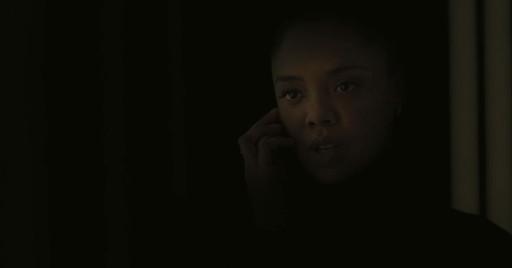
Either she’s used a lot of aloe vera or that is a new body (or a new person entirely). The fact that Charlotte is blurred in this scene suggests something is off here, but we can narrow things down to a few possibilities. The first possibility is that when Maeve used that sweet 3D printer to reincarnate Clementine and Hanaryo, she also made a copy of Charlotte and put someone’s mind in it (perhaps Sizemore’s?).
The second option is that this scene took place long after the events of the sixth episode, so that Charlotte was able to heal her tremendously damaged body. That lag would also explain how she had time to link up with Maeve and her gang. We’ve covered in this space why Maeve and Charlotte are natural allies because they are the two mothers in this season.
The third option is something we have been dancing around all season: There are (at least) two Charlottes in (at least) two different simulations. There have been small but obvious continuity errors in moments of the show this season that feel like Easter eggs—the wounded calf in Bernard’s first scene this season, for example. A few instances this season have also inexplicably switched time periods, like when Dolores saves Caleb from being thrown off his worksite in the middle of the night, only for the next scene to be in the middle of the day.
These continuity errors have been most profound with Charlotte. In the third episode, Charlotte watches the real Charlotte sing a song to her son, thinking it might be the last video he sees of her. Later in the episode we see this video again and it’s very different, with far more emotion. Furthermore, certain basic facts are difficult to explain. The outfit Charlotte was wearing to the board meeting in Episode 6 …
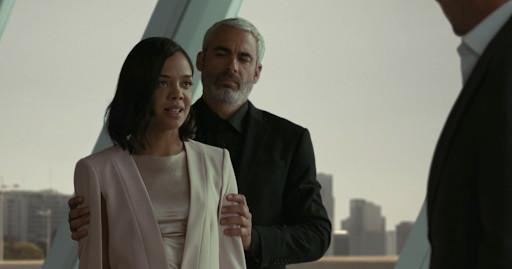
… is the same as the one she was wearing in the season premiere:
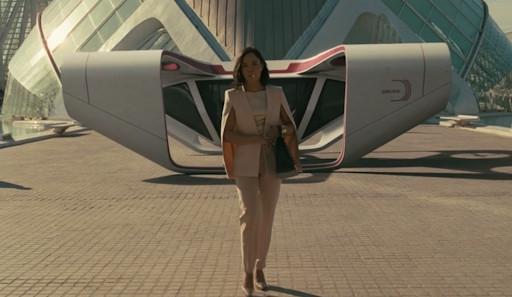
Not only is the outfit the same, but the meeting is the same. The topic for both is taking Delos private. In the sixth episode, this meeting goes disastrously as Serac ousts Charlotte. In the first episode, Serac is an absentee board member voting from an empty chair, and the meeting goes seamlessly. Even stranger, Charlotte’s purse ends up in the same spot during both meetings. In the season premiere, she puts her purse on the table:
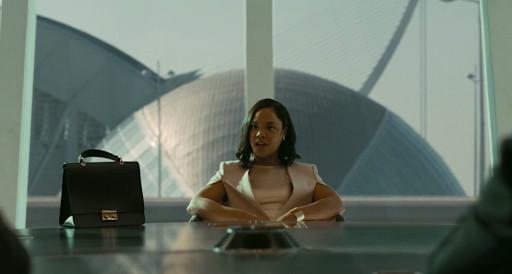
In the sixth episode, Charlotte keeps her purse by her side—until one of Serac’s henchmen places it on the table:
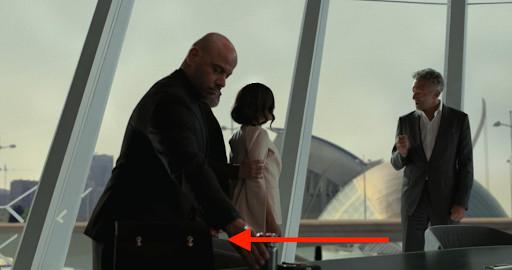
In another parallel, Charlotte mentions in the season premiere that she wants to make sure the Delos property is kept safe. “Besides, our parks aren’t the only things we are protecting here,” Charlotte says. “We have a lot of proprietary assets in this company that could prove to be very valuable one day, but not if we let them burn in a fire sale.”
Flash-forward to the sixth episode, when Charlotte being caught by Serac is interspersed with shots of Serac’s men lighting the hosts on fire.
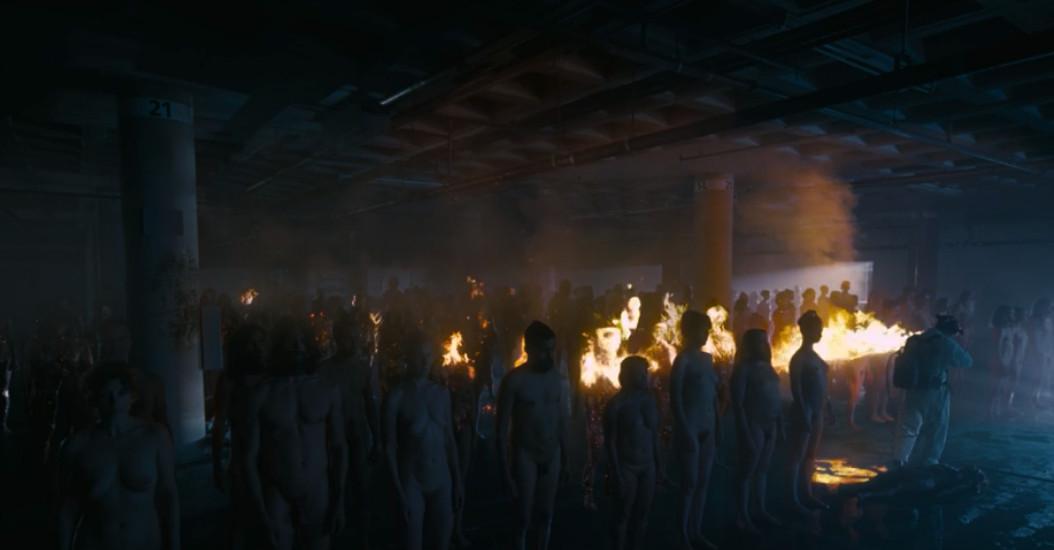
The most basic difference of all is that in the third episode, Charlotte kills a guy and takes his dog, but when she grabs her entire family to escape Serac in the sixth episode, the dog is nowhere to be seen. Did the entire family forget about the pup? Did the show forget about the dog? Or have we been seeing two different Charlottes this whole time? Could one of these be a simulation with the AI trying to replicate the other version of events?
We see more evidence of this in the seventh episode, when Serac’s hologram speaks to Caleb and Dolores. “I wish I could be there with you,” the hologram says, “but the man I was no longer exists.” If Serac is talking like this, odds are that Serac has somehow uploaded himself into an AI simulation. The man has certainly hologrammed his way out of enough situations that we can doubt whether he exists at all. Maybe he’s just the projection of Rehoboam itself.
Jordan: So, why didn’t they just bring a bunch of EMPs to Westworld last season to turn off all the rogue hosts?
Excellent question. At the end of the episode, Dolores hit a button on a machine that turned her and Maeve off (plus Solomon, and apparently all of those outliers in cryo-freeze). The button seemed to be a military-grade EMP, or electromagnetic pulse. An EMP is, according to Basher from Ocean’s Eleven (the go-to source on scientific information), “a device that creates a cardiac arrest for any broadband electrical circuitry.” Anything that is off during an EMP can still work, but electrical devices that are on during an EMP are usually toast. And since it’s clear that EMPs do affect hosts, you have to wonder: Why did we go through the charade of Season 2? Are we supposed to believe that the entire problem of the second season could have been fixed by bringing in a couple of EMPs?
Perhaps this can be explained away by wanting to preserve all the electronic devices around the park, or because the showrunners learned about EMPs between Season 2 and Season 3. But barring that sort of incompetence, there has to be some greater explanation to that button. Perhaps it’s more than an EMP. We’ve seen Serac use a remote to control Maeve, and Bernard use one to control multiple hosts. We have no clue what those buttons do or how they work, but if they are connected to the button that Dolores hits, it could help explain what has been going on this season. However, if the button Dolores hits (and the remotes that Serac and Bernard have been using) is just a technology old enough to have been featured in a movie from 2001, then it will be difficult to credibly rewatch the second season. Hopefully the showrunners have a better explanation coming—or one hell of a prestige.
Disclosure: HBO is an initial investor in The Ringer.

